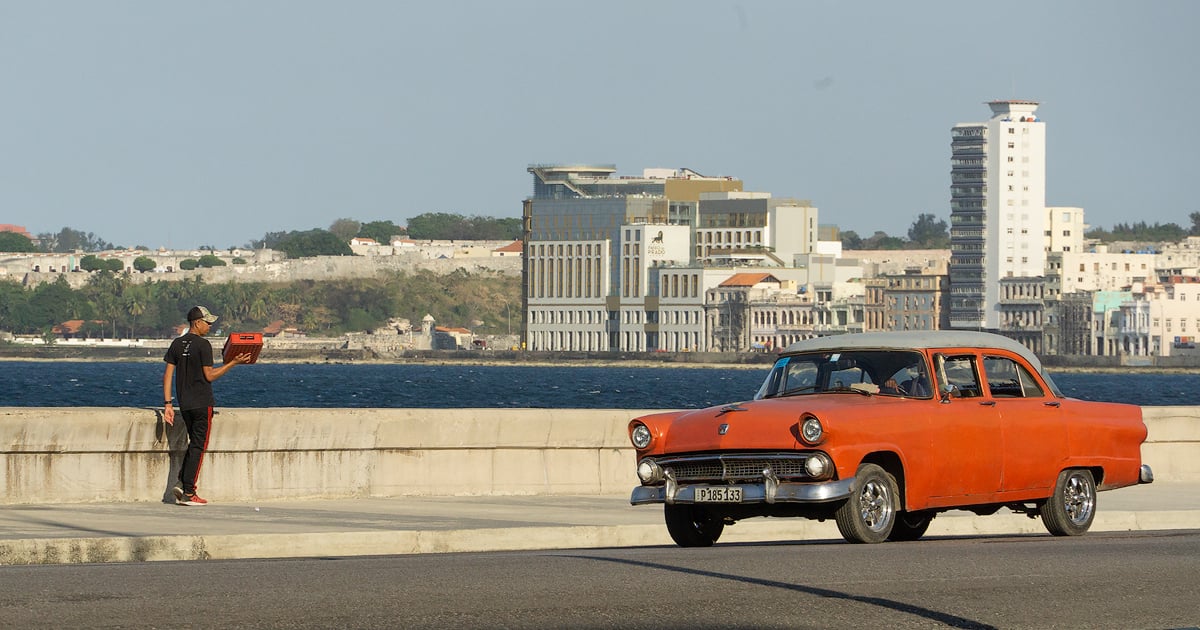The economic and social turmoil in Cuba has led to an unprecedented collapse in the tourism sector. The regime had invested heavily in this industry, hoping for a revival that never came. As 2025 approaches, it is shaping up to be yet another challenging year.
Recently, a Cuban resident highlighted the desolation in Varadero and Havana, Cuba's primary tourist hubs, which are now eerily quiet. Streets are deserted and hotels are nearly empty despite it being the peak season for tourism in Cuba. Images circulating on social media reveal beaches devoid of visitors and once-vibrant tourist areas now abandoned.
Challenges in Air Connectivity
The situation is further exacerbated by the decisions of several international airlines to reduce or cancel flights to Cuba, citing low demand and operational difficulties on the island. On February 2, 2025, Iberia announced potential cancellations of its Cuba routes from Spain due to low profitability. Similarly, Edelweiss plans to cease flights in March, and Cóndor will terminate its operations in May, ending the sole direct connection between Cuba and Germany.
Moreover, Cuba's national airline, Cubana de Aviación, is grappling with operational challenges, maintaining just two planes since January. Fuel shortages at Havana and Varadero airports, reported on November 30, 2024, have created additional complications for the few airlines still serving the island.
Hotel Infrastructure Deterioration
Lack of investment and maintenance have left many hotels, particularly in Varadero, in a state of disrepair. Once a Caribbean paradise, these establishments now feature outdated facilities, empty pools, and limited services, drawing criticism from the few tourists who dare to visit. Instead of refurbishing iconic hotels, the regime opted to fund a controversial skyscraper project in El Vedado—La Torre de 23 y K—which now struggles to attract guests.
Healthcare System Woes Impact Tourism
Cuba's healthcare crisis is also tarnishing its image as a safe destination. Inadequate medical attention and poor hospital services have become a concern. Recently, a Canadian tourist faced numerous challenges after a hip fracture in Cuba. She reported communication issues with medical staff, a lack of information about her treatment, and subpar hospital conditions.
Transportation and Service Challenges
The poor condition of roads and an aging vehicle fleet have further contributed to tourism's decline. Traffic accidents involving travelers have increased, and the scarcity of fuel hinders transportation within the island, discouraging tourists who then choose safer and more accessible destinations.
The deteriorating state of rental cars in Cuba is another issue. Many vehicles are in poor technical condition, despite daily rental costs exceeding $100.
Food Shortages and Power Outages
Food shortages and frequent power outages worsen the situation. Many hotels have reduced their dining services due to a lack of basic supplies, while electrical disruptions negatively impact the quality of tourist stays and cultural interactions with locals.
The absence of investment, healthcare crisis, infrastructure decay, and widespread shortages have put Cuba in a precarious position within the Caribbean tourism market.
Caribbean Competition Increases as Cuban Tourism Declines
While Cuba struggles, other Caribbean destinations like the Dominican Republic are experiencing unprecedented growth. The neighboring country aims to double its tourist numbers to 20 million in the coming years by diversifying offerings and enhancing service quality.
In 2024, Dominican tourism hit a record with over 11 million visitors, a stark contrast to Cuba's reality. The island saw 2.2 million international tourists, marking a 9.6% decline from 2023—the lowest figure in two decades. The Cuban government had initially projected 3.2 million visitors but later revised the target to 2.7 million, which also fell short.
Canada remained the largest source market with 860,877 travelers, followed by Russia (185,816), the United States (142,450), Germany (65,487), Spain (65,054), and Mexico (62,839).
The drop in tourist arrivals severely impacts Cuba's economy, as tourism is a primary revenue stream the regime has consistently relied on, albeit unsuccessfully.
Frequently Asked Questions About Cuba's Tourism Decline
Why are airlines reducing flights to Cuba?
Airlines are reducing flights to Cuba due to low demand and operational challenges on the island, including fuel shortages and economic instability.
How has the healthcare crisis in Cuba affected tourism?
Cuba's healthcare crisis has damaged its reputation as a safe destination, with tourists facing inadequate medical care and poor hospital conditions.
What are the main issues with Cuba's hotel infrastructure?
Cuba's hotel infrastructure suffers from a lack of investment and maintenance, resulting in outdated facilities, empty pools, and limited services.
Why is Caribbean tourism thriving while Cuba's is declining?
Other Caribbean destinations like the Dominican Republic are thriving due to diversified offerings and enhanced service quality, contrasting with Cuba's economic and infrastructural challenges.
